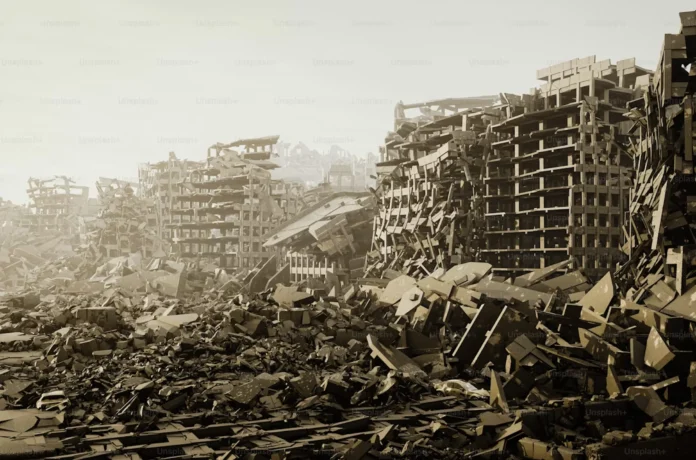In recent years, the topic of human extinction or societal collapse has become increasingly prevalent in discussions and debates among experts. The idea of a doomsday scenario, where humanity faces total wipeout, may seem like something out of a science fiction novel, but the reality is that it is a very real possibility. In fact, experts estimate varying probabilities for such a catastrophic event to occur within the coming decades, with some even betting on a 1-in-6 chance of it happening.
The doomsday clock is a symbolic representation of the likelihood of a global catastrophe, maintained by a group of scientists and experts known as the Bulletin of the Atomic Scientists. It was originally created in 1947 to represent the threat of nuclear war, but in recent years it has also taken into account other factors such as climate change, biotechnology, and artificial intelligence. The closer the clock is to midnight, the higher the probability of a global disaster.
Currently, the clock stands at 100 seconds to midnight, the closest it has ever been since its creation. This alarming development is due to a combination of factors, including the ongoing COVID-19 pandemic, the rise of authoritarian leaders, and the growing threat of nuclear war. But what is perhaps most concerning is the increasing likelihood of human extinction or severe societal collapse.
According to experts, there are several potential scenarios that could lead to the end of humanity as we know it. One of the most pressing is the threat of nuclear war. Despite efforts to reduce nuclear weapons, the world’s nuclear powers continue to possess enough firepower to destroy the entire planet several times over. The recent tensions between the United States and North Korea, as well as the ongoing conflict between India and Pakistan, serve as stark reminders of the devastating consequences of a nuclear war.
Another major concern is the impact of climate change. We are already seeing the effects of global warming, with extreme weather events such as hurricanes, wildfires, and droughts becoming more frequent and severe. The melting of polar ice caps and rising sea levels also pose a significant threat to coastal cities and low-lying areas. If we do not take immediate and drastic action to address climate change, the consequences could be catastrophic.
In addition to these external threats, there are also internal factors that could lead to human extinction or societal collapse. One of these is the growing divide between the rich and the poor. The concentration of wealth and power in the hands of a few has resulted in increased social and economic inequality, which could ultimately lead to widespread unrest and conflict. The collapse of civilizations, such as the Roman Empire, serves as a warning of what can happen when a society becomes too divided.
Another internal threat is the rapid advancements in technology, particularly in the fields of biotechnology and artificial intelligence. While these developments have the potential to greatly improve our lives, they also come with significant risks. The creation of bioengineered viruses or the development of superintelligent machines could have disastrous consequences for humanity if they fall into the wrong hands.
The fact that experts are now placing a 1-in-6 bet on human extinction or societal collapse within the coming decades is a sobering wake-up call. It is a call to action for individuals, governments, and organizations to take immediate and decisive action to prevent such a catastrophic outcome.
But there is still hope. We have the knowledge, technology, and resources to address these threats, but we must act now. We must work together to reduce the risk of nuclear war, mitigate the effects of climate change, and address social and economic inequality. We must also carefully consider the potential risks and consequences of new technologies, and ensure that they are used for the betterment of humanity, not its downfall.
The doomsday clock may be ticking, but it is not too late. We have the power to determine our fate, and we must use it wisely. As individuals, we can make small changes in our daily lives to reduce our carbon footprint and promote peace and unity. As governments and organizations, we must prioritize the safety and well-being of our planet and its inhabitants above all else. By working together, we can overcome these challenges and ensure a bright and sustainable future for generations to come.
In conclusion, the 1-in-6 odds of human extinction or societal collapse within the coming decades should serve as a wake-up call for us all. It is a reminder that the future of humanity is not guaranteed and that we must take immediate and decisive action to safeguard our planet and our

